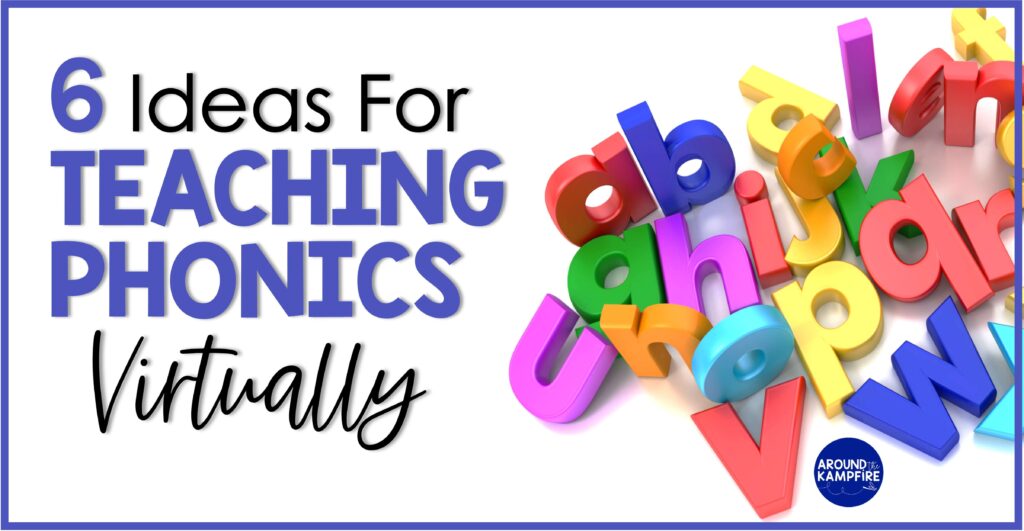As a first-year teacher, I dreaded center time. Mostly because I didn’t yet know that the secret to getting my students to work independently during centers was to train them. I didn’t yet know how to train my students well and I wasn’t consistent. And I was certainly no expert in student engagement. In this post I’ll share the specific actions I took that changed all that and made my small group and center time one I looked forward to. I’ll share with you my 7 secrets to student independence during centers.
How do you teach student independence during centers?
The goal of literacy centers is to provide our students with meaningful independent activities in order to create time for small group instruction. Students working independently is key. But you may be asking, “How do you get students to work independently during centers?”
Here’s how: Your literacy center time can run like clockwork, and your students can work independently, when you take the time to train them. Teaching independent work skills is as important as teaching routines and procedures. The following steps are the keys to students’ independence and engagement during centers.

1. Establish Routines
Students succeed in classrooms when there is a set routine they can learn to follow. Some of those routines include: how they begin working, voice levels, rotating between different centers, turning work in, and clean-up. All your routines and procedures should be taught, modeled, and practiced. Once routines have been put into place, be consistent in maintaining the expectations. Learn all the important routines to establish and how to start centers at the beginning of the year with this link.
Free word builder letters tiles
2. Model Expectations
Setting high expectations for centers will help students to be successful. This goes for routines like transitions and labeling a center assignment, voice levels while working, and the quality of work students produce. Model exactly what it is you expect from students and do not deviate. Allowing students to chat off-task while working or to turn in poor quality work one day but not the next will send mixed messages. Maintain your expectations so that students can count on consistency and develop good habits. Consistency gives students the security of always knowing what is expected and what is being asked of them.
3. Build Stamina
Most students do not start the school year off with a high level of stamina when it comes to working independently. This is something that must be practiced. During the first week of centers, gauge how long your students can work independently. Try to avoid centers that are much longer than that. Slowly over the next few weeks, increase your expectations for independent work time by introducing centers that will take slightly longer. Slowly increasing their center tasks will build stamina but not overwhelm students.
4. Reinforce Positive Behavior
Choose positive behavior reinforcement over punishment or consequences whenever possible. Positively reinforcing the proper behavior will help students to stay on task and work independently. Often, we just need to compliment a student on how well they are working quietly and independently. This encourages other students to do the same. It also reminds students that you are always monitoring things regardless of where you are in the classroom.
Invariably, you will have a student or two who just can’t work by themselves. They struggle to stay focused, engaged, and on-task. There are several strategies you can use to support students who struggle to work independently, but I’ll save those for another post coming soon.
Supporting student engagment during centers

5. Strategically Group Students
Strategically forming your groups can support student independence during centers. Properly grouping students is key to running centers successfully. Consider grouping students by mixing up genders, abilities, and strengths. Group an on grade level student with a student above grade level. Group a student who struggles with a student that is on grade level. I avoid grouping students that are below grade level with each other. Proper grouping will allow students to work with their peers when necessary and also to go to them for help when needed. Mix up girls and boys as is necessary in your classroom to promote healthy peer relationships and decrease conflict. Consider keeping group numbers to two or three when possible. This allows for less distractions.
6. Use Consistent Center Activities
Consistent activities support student independence during centers. Center time is not the time to introduce new material. Everything students work on during this time should be review work. Center time is for students to practice skills they are learning in class, at their level. Using centers with consistent directions and activities, but with changing skills each week, decreases the amount of confusion or questions students have and will make centers easier to manage. Make sure you have properly introduced all skills to students. Use your center time for students to practice skills, not to learn new ones.
I’ve created a series of phonics resources that include consistent, daily center activities. Sign up below and I’ll send you a sampler of centers for 5 different phonics skills!
Consider offering students different choices during centers to increase engagement and interest. This could include choosing which centers they complete on a given day or choosing an activity within the center. For example, students could choose from writing prompts or articles to read to complete a reading response.
7. Hold Students Accountable
Students need to understand that their work, actions, and behavior are being monitored during this time and they will be held accountable. Consider having students use a centers folder and a checklist for completing their work. Designate a specific day that work is due. Teach procedures for unfinished work and if students will have make up time to finish. Grab these FREE center folder labels.
Use your classroom management plan consistently during center time. Provide positive reinforcement and consequences when necessary. Students will be more motivated to stay on task and work independently when they know they are being held accountable.
Teach your students to be reflective and self-monitoring. Consider using an exit ticket for students to evaluate themselves and their work at the end of the week. To try this strategy download these FREE Centers Exit Tickets.

For meaningful and consistent phonics activities that will get your students excited about centers, check out the phonics units below. These units include interactive teaching PowerPoints, phonics-based spelling activities, sound comparison, word work centers, phonics reading passages, and printable worksheets perfect for homework.
Help your students master foundational phonics skills and get resoures for your whole group lessons, small group instruction, interventions, and even homework, all in one place.
See all phonics units HERE
If your students are struggling to work independently during centers, try these 7 tips and let me know how it goes! For more literacy centers management help and teaching ideas, visit these posts:
How to Make Phonics Centers Easier To Manage

6 Ideas for Teaching Phonics Virtually
How to start centers at the beginning of the year
Happy teaching!











Leave a Comment